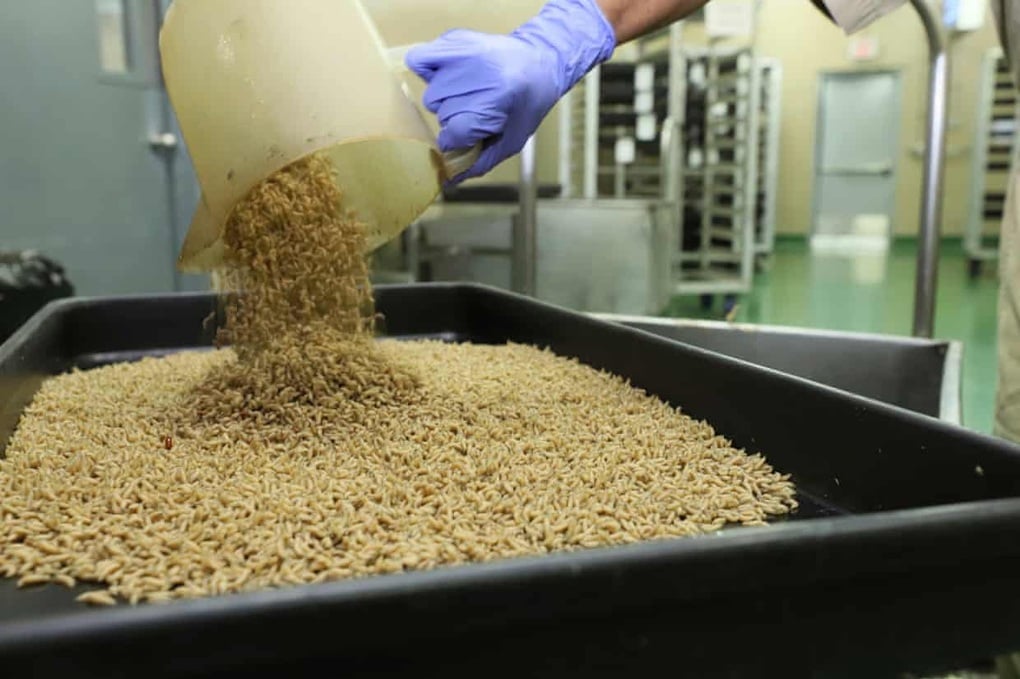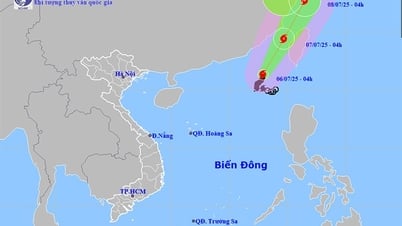According to The Guardian , the US government is preparing a large-scale campaign: breeding billions of flies and releasing them from planes over Mexico and southern Texas (USA).
The goal is to stop screwworm larvae, a dangerous parasite that can kill livestock in just two weeks.
Scientifically proven method
This plan, which sounds like the plot of a science fiction movie, is actually based on a proven scientific method.
According to the US Department of Agriculture (USDA), in a campaign from 1962 to 1975, the US and Mexico jointly released more than 94 billion sterile male flies, successfully eliminating almost all of this haunting parasite in North America.
The key to the method lies in the strange biology of female screwworm flies: they mate only once in their lifetime. When mated with sterile males (sterilized by radiation), the fly eggs are not fertilized, do not hatch into larvae, causing the population to rapidly decline.
“This is one of USDA's greatest scientific achievements in turning technology into a practical solution,” said Edwin Burgess, a parasitologist at the University of Florida.
The threat from "flesh-eating larvae"
Screwworm fly larvae (scientific name: Cochliomyia hominivorax ) are unlike ordinary flies that only eat carrion. They are famous for their ability to “eat raw flesh”.
Female flies lay their eggs in open wounds of warm-blooded animals (including livestock, pets, and humans). The hatched larvae penetrate deep into living tissue, eating flesh from within, causing extreme pain, widespread infection, and even death if not treated promptly.
Maggots are used in fly breeding factories (Photo: AP).
“A 1,000-pound cow can die in just two weeks if severely infected,” warned Michael Bailey, president of the American Veterinary Medical Association.
Although veterinarians can treat with larvicides, the process is both expensive and painful for the animal.
Because of their cold-hardiness, screwworm flies were once a summertime nuisance in South America. However, in late 2024, the USDA confirmed that the species had reappeared in southern Mexico near the US border, raising concerns that they will move north with livestock.
To prevent the spread of the disease, the US temporarily closed its border to live cattle, horses, and buffalo from Mexico in May and is not expected to reopen until at least mid-September.
"Flies Rain" Campaign in the Sky
Under the latest plan, the USDA will build a large-scale fly production plant in southern Mexico starting in July 2026, with a breeding capacity of 400 million flies per week, more than three times the capacity of the current plant in Panama.
The male flies are fed a special diet of egg powder, honey or bovine plasma, then sterilized with radiation before being packed into crates and loaded onto planes to be spread along the border.
The fly-release method still retains the basic technology from the 1950s. Flies are placed in a specialized box, a light plane flies low, opens the door and releases the flies to the ground. In the first experiments, scientists even put flies in paper cups and released them from the plane through a slide.
Risks and challenges
But the campaign is not without risks. In June, a drone crashed near the Mexico-Guatemala border, killing three people.
Additionally, according to Dr. Sonja Swiger, an entomologist at Texas A&M University, factories must strictly control breeding flies so that no viable males escape into the environment.
Professor Burgess said that instead of closing factories immediately after the epidemic is erased, it is necessary to maintain a response system. "What we thought we had absolutely controlled can come back at any time," he emphasized.
Source: https://dantri.com.vn/khoa-hoc/ly-do-khien-my-du-dinh-tha-hang-ty-con-ruoi-tu-may-bay-20250704055232321.htm

























































































![[OCOP REVIEW] Bay Quyen sticky rice cake: A hometown specialty that has reached new heights thanks to its brand reputation](https://vphoto.vietnam.vn/thumb/402x226/vietnam/resource/IMAGE/2025/7/3/1a7e35c028bf46199ee1ec6b3ba0069e)










Comment (0)